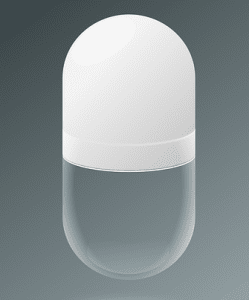A 21st Century Approach to Medication Adherence
 Last fall, the FDA approved a ‘digital pill’ that will tell your doctor if you’ve been taking your medicine. The pill, which was approved by U.S. Food and Drug Administration on November 13, sends a signal to a wearable sensor when a patient has taken the medication, and that information is then sent to a doctor’s office. While this may seem reminiscent of the book 1984, the technology could help many who have trouble tracking their medications.
Last fall, the FDA approved a ‘digital pill’ that will tell your doctor if you’ve been taking your medicine. The pill, which was approved by U.S. Food and Drug Administration on November 13, sends a signal to a wearable sensor when a patient has taken the medication, and that information is then sent to a doctor’s office. While this may seem reminiscent of the book 1984, the technology could help many who have trouble tracking their medications.
Embedded in the pill is a sensor that consists of a silicon chip with the logic circuit, along with two pieces of metal. When the sensor is dropped into a solution of water or hydrochloric acid in the stomach, the pill dissolves, leaving the sensor behind, and the device generates a very small current, enough to run the chip.
Once activated, the chip — only 1 millimeter on a side, and 0.3 mm thick — sends one number. That number identifies the pill and tells the wearable, adhesive sensor —that it has been ingested. The pill is designed to work just long enough for it to send a signal to the wearable sensor that it should wake up and start gathering data.
The wearable sensor, which is an adhesive patch worn on the abdomen, can detect how active the patient is, like a Fitbit. The fact that the patient took a pill, and whether they are moving, standing or sitting, is sent to a smart phone app via Bluetooth. The app then asks the patient how they feel and records the response. If the patient consents, the app can send the time they took the pill, their activity level and their self-reported stress to their doctor, who can look at the data over time and get an idea of how routine the patient’s medication use is.
Originally, the digital pill was used to track the ingestion of an anti-psychotic drug known by the commercial name Abilify. There are concerns that this type of medication adherence monitoring may feel intrusive, but for older adults this may be welcomed as a means to help them remember to take pills or those who take large quantities of medication for conditions like tuberculosis. The goal is to show that a device of this sort improves medication adherence, and reduce relapses and unnecessary hospital readmissions.
Commercial use is still limited, with nine health systems in six states prescribing it with medications for conditions including hypertension and hepatitis C. Once the link is made to medication adherence, we may see more pills becoming digitized.










